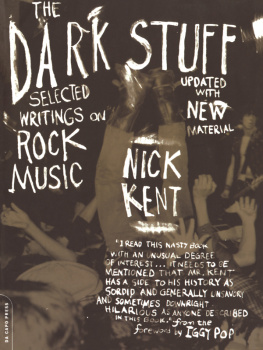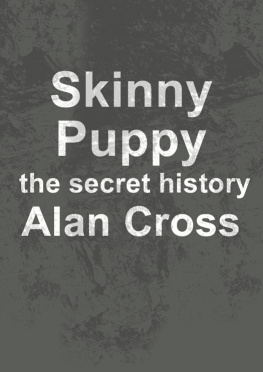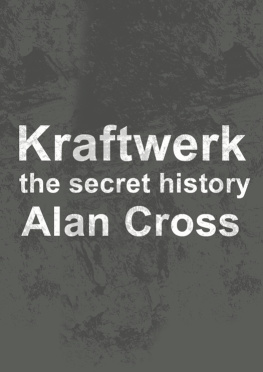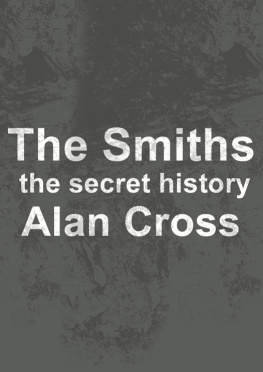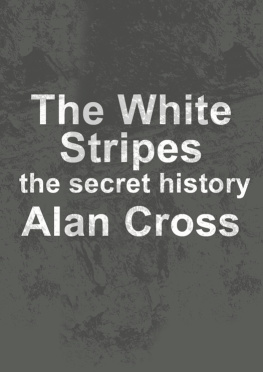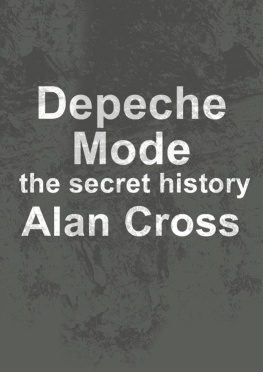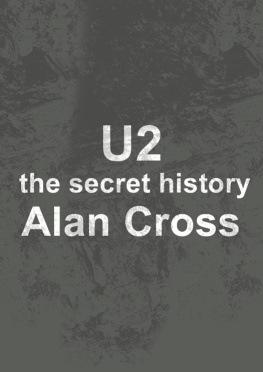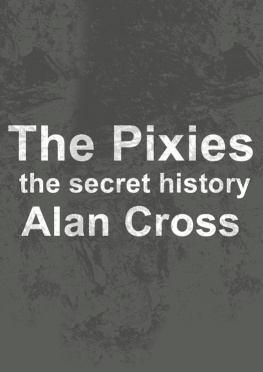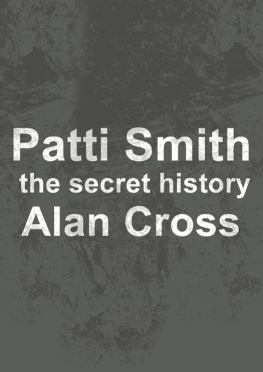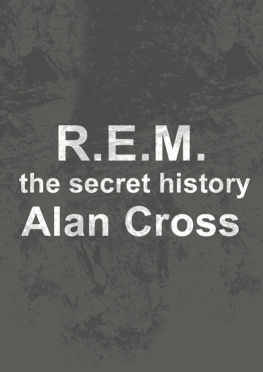The Godfather of Punk
Iggy Pop spent so much of his career teetering on the edge of the abyss that its amazing that hes still alive. When Iggy first appeared in 1967, no one had ever seen a performer pursue physical and chemical self-destruction with such energy and zeal. For years, Iggy approached each performancein fact, each dayas a dare, a kind of stare-down with the Grim Reaper that said, Go on! Try and take me! His survival, redemption and subsequent rebirth as a punk icon have only enhanced his position as one of the greatest rock and roll legends of all time.
In 1962, Jimmy started playing drums for a local group called the Iguanas, a straight-arrow pop band that favored short haircuts and matching sport coats. They were, however, reasonably accomplished; they were respected enough to land opening slots for the Marvelettes and a few of the other major Motown acts of the day. Jimmys playing impressed one of the staff producers at Motown, who offered him the occasional bit of studio work. Although it cant be verified, its quite possible that Jimmy is heard playing drums on Leader of the Pack, the 1964 hit by the Shangri-Las. (Similarly, the piano parts may have been played by a young Billy Joel. However, because the drums and the piano were recorded on separate days, Iggy and Billy were never in the same studio together.) In 1965, the Iguanas released one single, a Bo Diddley cover called Mona that had little impact outside the groups immediate circle of friends and fans.
In 1966, Jimmy moved to a group called the Prime Movers before dropping out of the University of Michigan and quitting his job at Discount Records. He hitchhiked to Chicago with a couple of co-workers and spent the next eight months sitting in with a variety of blues musicians on the citys south side. Impressed by the simplicity and emotion of this music, Jimmy began to appropriate some of these blues stylings for himself. He also had his first drug experiences in Chicago, beginning with the discovery that smoking marijuana didnt bother his asthma at all.
Having successfully avoided the Vietnam draft (legend has it that he flashed his genitals at the recruiter while proclaiming himself to be gay, thus giving the US Army pause about handing him a loaded weapon), Jimmy began to enjoy being weird for the sake of being weirdanything to shock people. His strange haircuts and propensity for wearing big, ill-fitting overalls periodically caught the attention of the local police, who often stopped him on the street, mistaking him for an escaped mental patient.
Inspired by his musical experiences in Chicago, Jimmy moved back in with his parents to contemplate his future. After seeing a Velvet Underground gig in April 1967 and a show by the Doors that summer (events that he later claimed changed his life) he phoned up Ron Asheton, one of his bandmates in the Prime Movers who was looking to form another group after the disintegration of his last one (the Dirty Shames). The initial plan was to have Jimmy play organ (his mother helped him buy one on the condition that he cut his long hair), but as this new group came together, it became clear that Jimmy would be lead singer. Jimmy taught Rons brother, Scott, what he knew about the drums, freeing himself to step out front. The band, founded over a bag of dope while watching a Three Stooges marathon on TV, became known as the Psychedelic Stooges.
This is when Jimmy Osterberg became Iggy Pop. The Iggy was a natural derivation from his association with the Iguanas. The Pop was borrowed from a friend named Jim Pop, a local junkie who had lost all his hairincluding his eyebrowsdue to a nervous condition. When Iggy decided to shave off his eyebrows (perhaps as an act of solidarity), he was immediately tagged Iggy Pop.
The Psychedelic Stooges were more a fun-loving, drug-taking gang of delinquent slobs than a group of musicians with any serious pretensions. They played their first show at a private party in Ann Arbor on October 31, 1967. Even by the standards of Halloween, it was a frightening event. Their performance was so crazy that after the set, some of the friends who hadnt fled in embarrassment asked Iggy if he was having mental problems. Their manager quit in disgust and returned to his job as a schoolteacher.
Any heckling from the audience was met with threats of violence and spews of spit from the stage.
As the Stooges began to play regular shows, they attracted a following of what could best be described as anti-hippies. The audience came to hear angry, violent, primitive rock and roll that was totally free of love beads and flower power; it had nothing in common with the psychedelia of the Haight-Ashbury scene in San Francisco, and it certainly wasnt the sugarcoated pop that dominated AM radio. It was brutal, ragged and high energy, unbound by any dreary social or political agendamusic made by misfits and outsiders for misfits and outsiders.
Before each show, Iggy ensured that any inhibitions were destroyed with a buffet of meth, LSD (usually orange sunshine) and pot. Most of his clothes came off during the first few songs. After smashing himself in the mouth a few times, he would rub raw meat and peanut butter (usually Skippy) over his bare chest, throwing the remains into the crowd. If the audience threw bottles at the stage, Iggy picked up the broken glass and carved long wounds into his chest and arms. If there was no glass, Iggy would simply pull out the steak knife that he kept for such emergencies. At other points in the show, Iggy would climb up the PA stacks or the lighting rigs. If he believed that a certain member of the audience deserved to be attacked physically, Iggy would launch himself into the crowd. In the absence of hecklers (or gang members that Iggy had happened to piss off), he would literally walk on the audience, supported by willing hands and shoulders.
As the maelstrom unfolded, the rest of the band, often decorated with Nazi regalia, generated a swirling drone of power chords and feedback while stepping gingerly through the broken glass and blood that washed across the stage. Occasionally Ron Asheton would step forward brandishing a bullwhip and peel a few strips of flesh from Iggys back.
No one knew what to make of this. Was this the future of rock? Or were Iggy and the Stooges just obscenely bad? Local police were often only too happy to bust Iggy for indecent exposure and lewd behavior. (Imagine the public outcry if someone did these things today, and then remember that this was the late 60s!)
By 1968, the Stooges shared a management team with the MC5 (another notorious anti-mainstream band from Detroit). When Elektra Records came to have a look at the MC5, it also decided to take a chance on the Stooges after seeing them play a benefit at the University of Michigan for a local childrens school. One of the many tales about the Stooges states that the group had never written a complete song before they signed that first recording contract. Armed with three chords, a bad attitude and a satchel full of narcotics, the group took all of four days to make The Stooges (the Psychedelic part of their name having been dropped by this time) with John Cale of the Velvet Underground as producer. Two songs from this record, No Fun and I Wanna Be Your Dog, would later become staples in the Sex Pistols repertoire. The album peaked at number 106 on the American charts.
a groupie nicknamed the Potato Girl (the marriage lasted one month), before returning to a regular diet of sex and drugs. This included a torrid affair with Nico, who was still with the Velvet Underground. She allegedly gave Iggy his first case of VD.
Elektra decided that the second Stooges album should be recorded in Los Angeles and hired Don Gallucci (ex-keyboardist for the Kingsmen) to produce.


